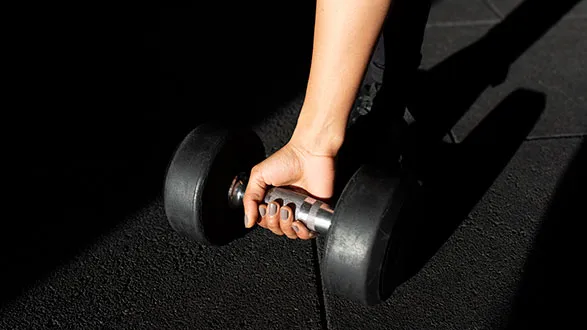People in the gym often loathe re-racking weights. For one, it's because no one else seems to do it, and second, there's little obvious incentive—except for a few good souls who genuinely care about gym etiquette. However, this seemingly mundane task holds untapped exercise potential, turning an act of courtesy into an opportunity for fitness gains. Here's how:
Functional Training in Action
Re-racking weights mimics real-life movements like lifting, carrying, and placing objects. This functional aspect trains your body to handle daily physical tasks more efficiently. Imagine effortlessly carrying groceries or moving furniture, thanks to the skills honed during re-racking.
Pro Tip: Use heavier weights with proper form to increase the challenge and amplify benefits.
Farmer's Walk Without Extra Time
As you carry weights back to the rack, you're essentially performing a farmer's walk, which strengthens grip, forearms, and posture while engaging the entire body. It's a multitasking fitness win.
Quick Fact: Studies show the farmer's walk is a highly effective full-body exercise, targeting the core, back, and legs.

Build Grip Strength and Forearm Endurance
Handling weights strengthens your grip, a crucial component for various exercises and everyday tasks. For an added challenge, carry weights with your fingertips to target forearm endurance.
Fitness Hack: Try alternating hands for an even workout.
Boost Stability and Balance
Carrying and placing weights demands controlled movements, engaging stabilizer muscles to improve balance and coordination. This reduces the risk of injuries both in the gym and daily life.
Visual Cue: Picture a sturdy table with perfectly balanced legs—that's what re-racking does for your body.
Activate Your Core
Each time you lift and move weights, your core works to stabilize your body. This indirect activation builds core strength, which is essential for proper posture and lower back health.
Real Talk: Your future self will thank you for a stronger core.
Achieve Symmetry by Using Your Non-Dominant Side
Intentionally using your less-dominant side to lift and rerack weights helps correct muscle imbalances. Over time, this promotes better symmetry and strength distribution across your body.
Challenge Yourself: Start with lighter weights on your weaker side and progress gradually.
Reinforce Proper Form
Re-racking weights is a chance to practice controlled, deliberate movements. This not only prevents injuries but also reinforces good form for other lifts.
Fitness Expert Insight: “Mastering form during simple actions creates muscle memory for more complex lifts,” says personal trainer Mark Thompson.
Cool Down Effectively
Think of re-racking weights as an active cool-down. It helps transition your body from intense activity to rest while promoting blood flow and reducing post-workout stiffness.
Pro Suggestion: Pair this with light stretching for maximum recovery benefits.
Burn Extra Calories Without Effort
The additional movements involved in re-racking contribute to calorie burn, supporting weight management goals. It's a simple yet effective way to make every movement count.
Small Habits, Big Gains
Consistently re-racking weights builds discipline and adds functional fitness elements to your routine. Over time, these small actions translate into significant strength, balance, and endurance improvements.
Inspiration: Success is the sum of small efforts repeated day in and day out. - Robert Collier
Conclusion
Re-racking weights is far more than a courtesy—it's an underrated aspect of fitness that enhances strength, balance, and calorie burn while improving everyday functionality.
So, next time you finish your set, take pride in putting those weights back. You're not just cleaning up; you're leveling up.
Challenge for You
What's one small habit you can commit to this week to improve your fitness routine? Share your thoughts in the contact us page!
